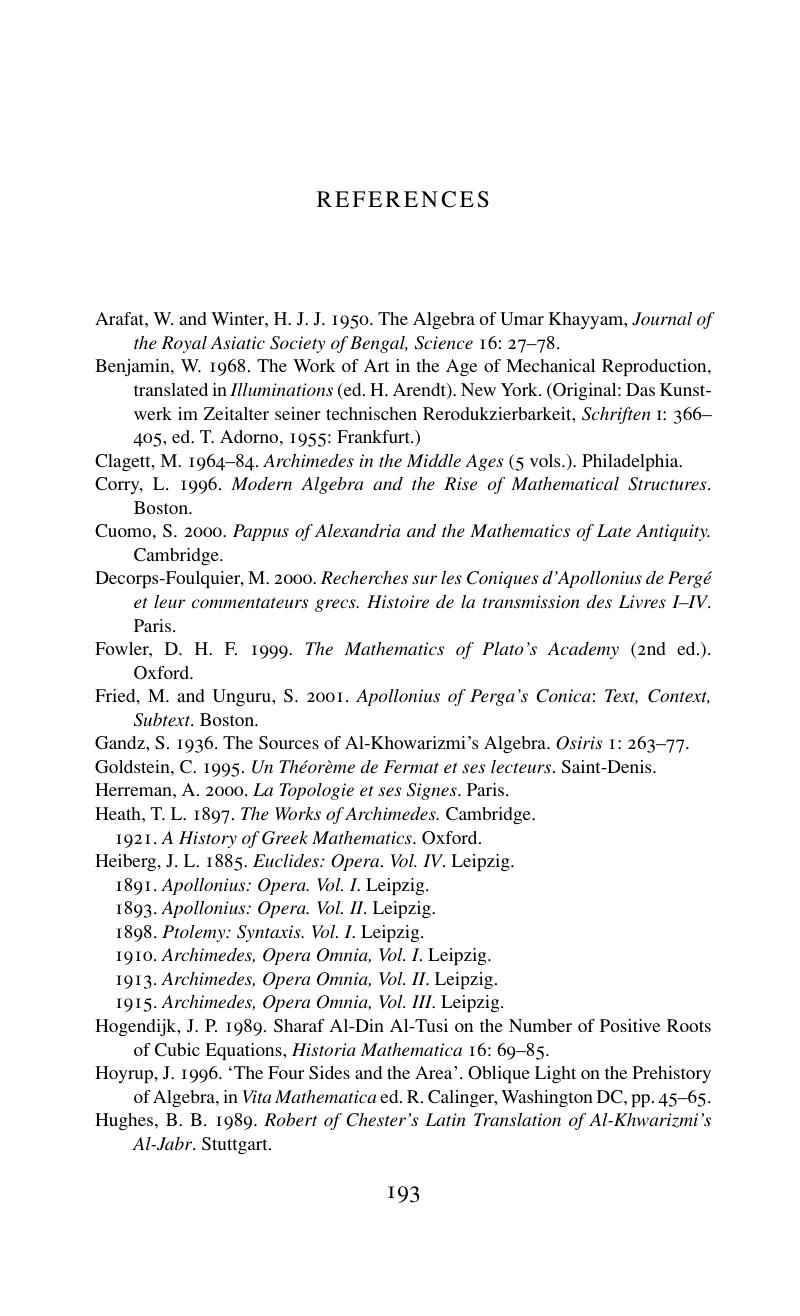References
Published online by Cambridge University Press: 05 May 2010
Summary

- Type
- Chapter
- Information
- The Transformation of Mathematics in the Early Mediterranean WorldFrom Problems to Equations, pp. 193 - 195Publisher: Cambridge University PressPrint publication year: 2004



